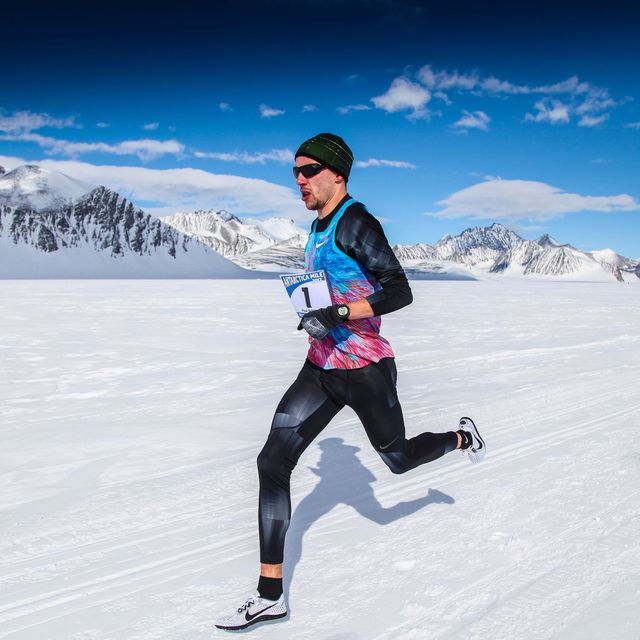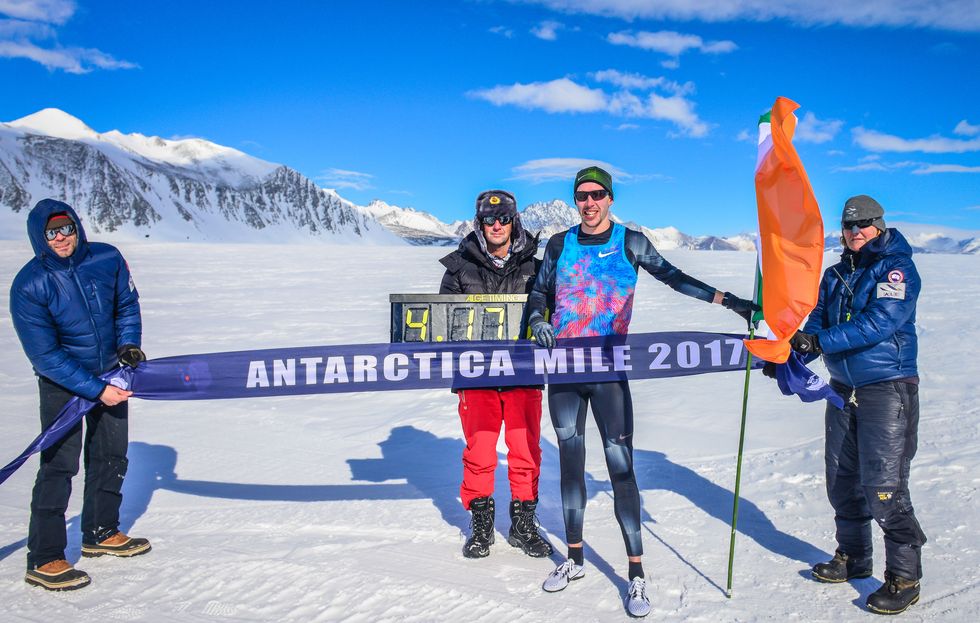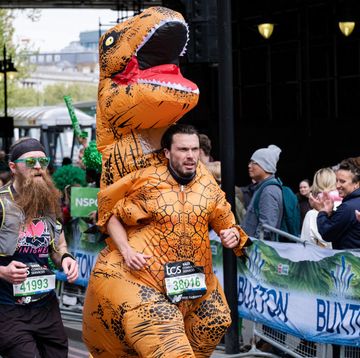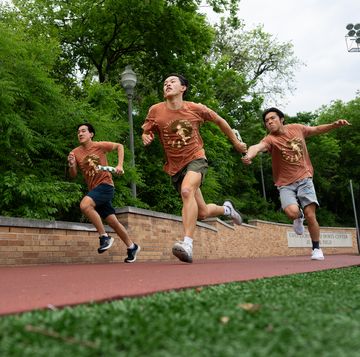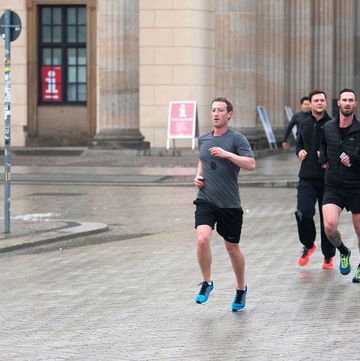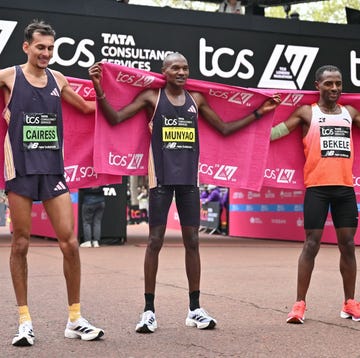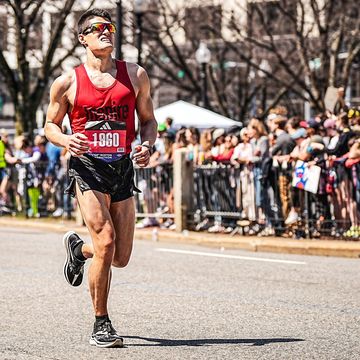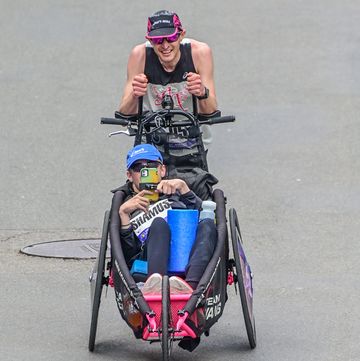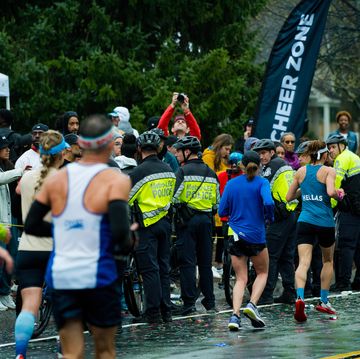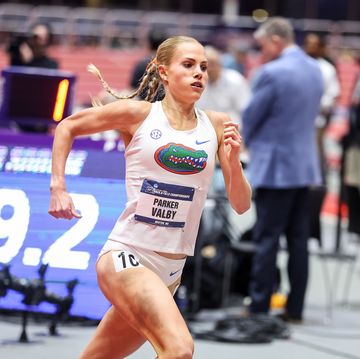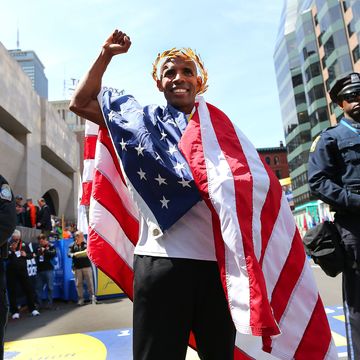Halfway through the hardest mile of his life, Paul Robinson, a world class athlete from Ireland, was struck by a troubling thought.
“I was like, Holy f***, I don’t know how I’m going to get to the end,” he said. “My legs were going to jelly, and I had this drone following me. I was like, I can’t hit the deck; I have to finish because I’m not doing this again.”
It was November 25 on Union Glacier in Antarctica, and the 26-year-old was dashing through the snow on his way to the fastest mile ever run on the frozen continent: 4:17.9.
To get there, Robinson set off from his home in Kilcock, Ireland, last Monday, traveling for three days before he touched down on the remote glacier.
The idea was the brainchild of Richard Donovan, an Irish ultrarunner who organizes the Antarctic Ice Marathon each year. Robinson, who has a best of 3:35.22 for 1500 meters (equivalent to a 3:52 mile), was in the middle of base training at the time but figured this was too good to turn down.
“It’s still my ultimate goal to go to the Olympics, but it’s good not to be boxed into elite athletics,” he said. “The general public is always able to associate with a mile and no one has ever run a fast one down there. This was a great way to show how cool it is to run a four-minute mile.”
The distance was measured four times using a GPS satellite before the race, and Robinson slept in a small tented village alongside runners who were taking on the marathon last weekend. “It was like stepping on the moon,” he said. “There was snow everywhere. It was absolutely freezing, and the wind feels like it’ll take you a mile down the road if you jump.”
The nights before the race Robinson hunkered down in a thick sleeping bag and tried his best to get some sleep despite the continuous daylight. “You wake up,” he said, “and your nose is freezing.”
The camp they stayed in was tiny, and going for a walk was a no-go. “There were crevasses all around, and if you go down one of those,” he said, “you’re not coming back.”
Unlike the marathon, which was run around a 10K loop, Robinson’s mile was run in a straight line across a plateau between two mountains. “It was like a snow desert,” he said. “You can’t even see a mile in front. You’re literally just running into white.”
While warming up for the race, Robinson wore three pairs of running tights, several layers on his upper body, and a massive jacket—yet he was still cold. Accounting for wind chill, the temperature was -13° Fahrenheit.
“You just cannot get warm,” he said. “The wind was beating off my face and it was just wild.”
For the race, Robinson stripped down to a single pair of running tights, one body warmer, and his racing vest along with a single pair of socks inside his racing spikes.
“I went off to see how fast I could run and when you’re used to that, you’re used to going four-minute mile pace,” he said. “The snow wasn’t deep, but it was energy-sapping, like running on sand. Your foot is going two or three inches into the snow on every step.”
When he crossed the line, he said, “your lungs feel like they’re going to explode.”
The morning after the race, Robinson and Donovan managed to get off the glacier on an early flight before an arriving blizzard. It was three days later before he arrived back in Ireland, convinced that races like this can be more than just a novelty for the sport.
“Could you imagine 10 guys running down a course like that in the Winter Olympics?” he said. “It’d make great viewing.”
And one final question for the slowly defrosting miler: Would he consider returning to Antarctica someday to take on the marathon?
“Nah, nah,” he said quickly. “No chance.”

Cathal Dennehy is a freelance writer based in Dublin, Ireland, who covers the sport for multiple outlets from Irish newspapers to international track websites. As an athlete, he was Irish junior cross-country champion and twice raced the European Cross Country, but since injury forced his retirement his best athletic feat has been the Irish beer mile record. He’s happiest when he’s running or writing stories about world-class athletes.
